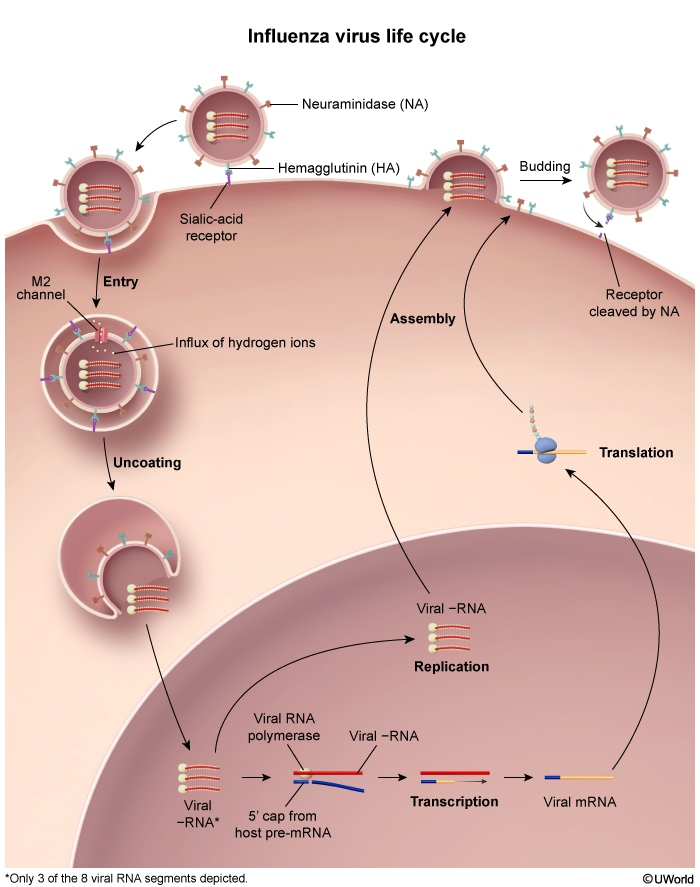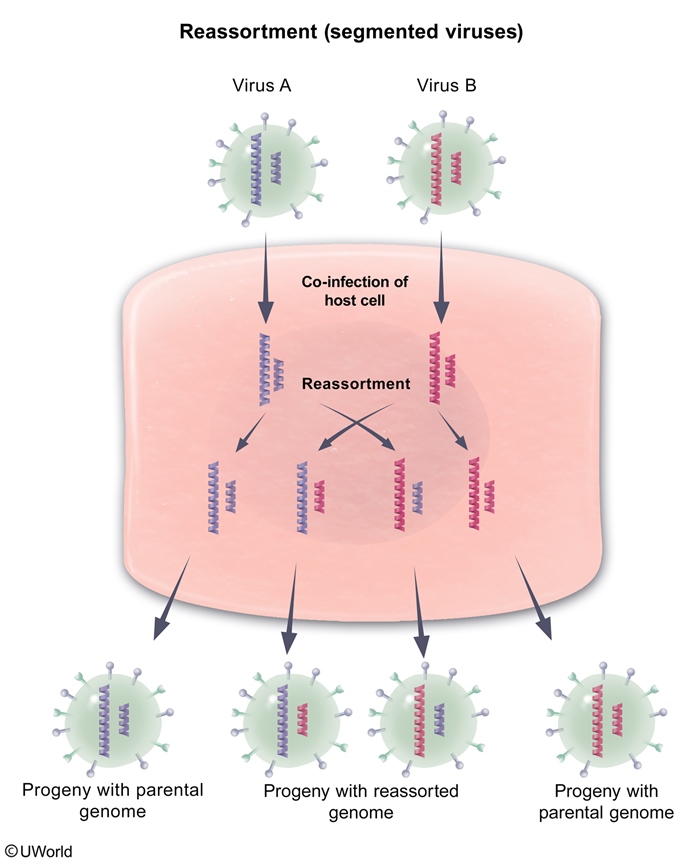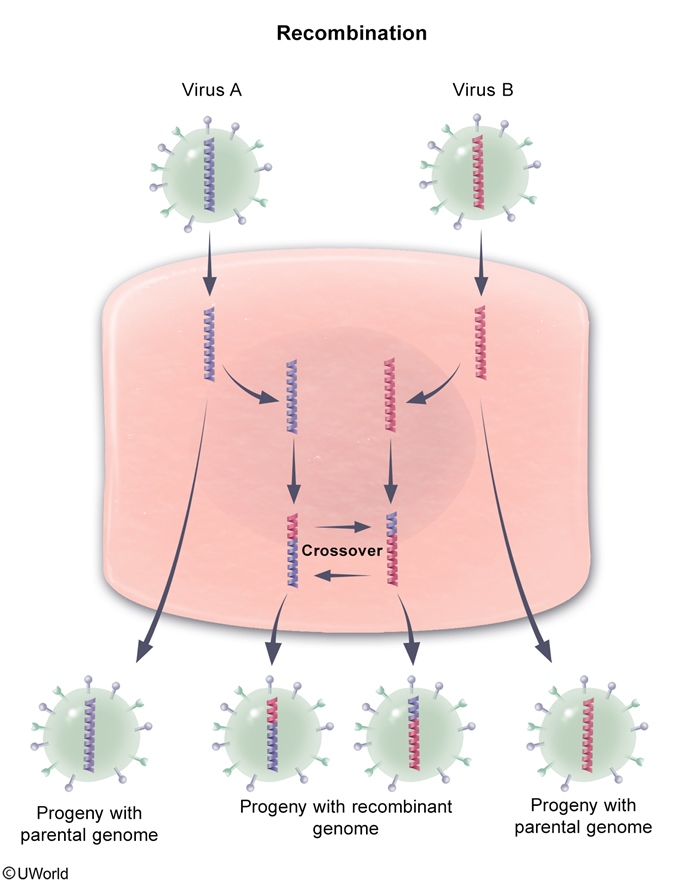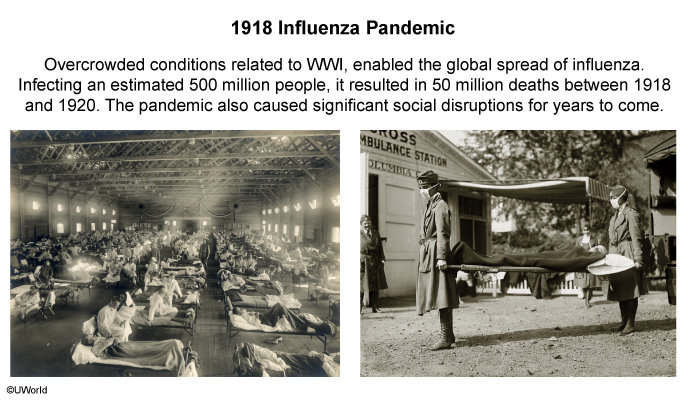Influenza
Article Sections
Introduction
Influenza (the flu) is a seasonal respiratory virus infecting approximately 1 billion people globally each year, resulting in over 500,000 deaths annually. While most cases are mild and self-limited, influenza can result in complications such as pneumonia, hospitalization, and death, particularly among vulnerable populations such as the elderly, young children, and those with underlying health conditions.
Virology
The influenza virus initially infects epithelial cells in the upper respiratory tract. Infection is a multistep process (Figure 1):
- Viral hemagglutinin (H) binds to sialic acid receptors on the host cell surface, followed by entry via endocytosis.
- Upon acidification within the endosome, hemagglutinin undergoes a conformational change, uncoating the virus and releasing viral RNA into the cytoplasm.
- The RNA is transported to the nucleus, where it is transcribed into mRNA by viral RNA-dependent RNA polymerase (RdRp). RdRp is a unique polymerase that snatches host 5' cap (
Continue Learning with UWorld
Get the full Influenza article plus rich visuals, real-world cases, and in-depth insights from medical experts, all available through the UWorld Medical Library.
Figures

Figure 1

Figure 2

Figure 3

Figure 4

Figure 5
Tables
Table 1